#aws migration consulting
Explore tagged Tumblr posts
Text
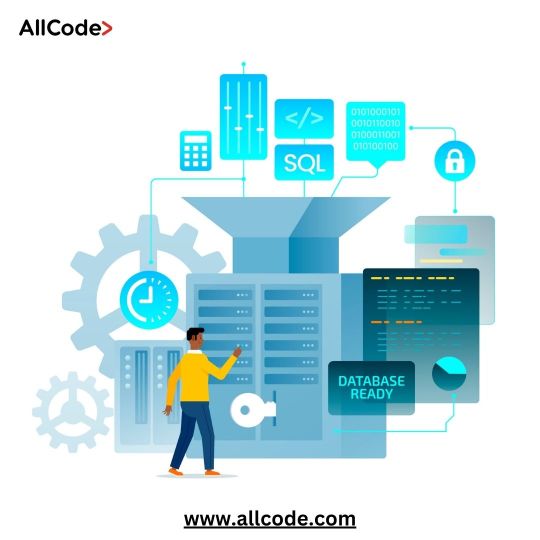
AWS Data Architecture Solutions | AllCode
Boost your business's data strategy with AWS Data Architecture Solutions. By leveraging the power of AWS, businesses can design, implement, and scale data architectures that ensure flexibility, security, and efficiency. These solutions integrate advanced cloud services to optimize data storage, processing, and analytics, while providing seamless scalability. Whether you're building a new data infrastructure or modernizing existing systems, AWS offers robust tools that empower organizations to manage data effectively, reduce costs, and enhance performance. Learn how AWS Data Architecture Solutions can transform your data-driven decisions and support your organization's growth.
0 notes
Text
AWS for Application Modernization: Updating Your Legacy Systems for the Cloud

Introduction:
In today’s rapidly evolving digital landscape, outdated legacy systems can hinder your business’s growth and innovation. These systems can be complex, expensive to maintain, and difficult to scale, posing a significant barrier to agility and progress. To stay ahead of the competition and unleash the full potential of your business, embracing AWS for application modernization is not just a choice but a necessity. By leveraging AWS consulting services, you can effectively navigate the complexities of modernization and ensure a smooth transition to cloud-powered agility.
Unlocking Cloud Potential: Top Strategies for Migrating to AWS

If you want to dive deeper into the benefits and approaches of AWS for application modernization, be sure to check out our detailed whitepaper: Migrating legacy applications to AWS cloud
“In today’s era of volatility, there is no other way but to re-invent. The only sustainable advantage you can have over others is agility, that’s it. Because nothing else is sustainable, everything else you create, somebody else will replicate.” — Jeff Bezos
The Need for Modernization:
Legacy systems often act as anchors, weighing down businesses with outdated technologies and inefficient processes. They can lead to:
Reduced agility: Legacy systems often lack the flexibility to adapt to changing market demands and customer needs.
Increased costs: Maintaining and upgrading legacy systems can be costly, diverting resources from more strategic initiatives.
Security vulnerabilities: Legacy systems may not be equipped with modern security measures, leaving them susceptible to cyberattacks.
Limited innovation: Legacy systems can hinder the adoption of new technologies and innovations that drive business growth.
AWS: Your Partner in Modernization:
AWS, a leading cloud platform, offers a comprehensive suite of services to help you modernize your legacy systems and transform your business. With AWS, you can:
Lift-and-shift: Migrate your existing applications to AWS without significant code changes.
Refactor: Restructure your applications to take advantage of cloud-native features and improve scalability.
Rebuild: Develop new applications from scratch using modern technologies and cloud-based infrastructure.

Benefits of AWS Application Modernization:
Modernizing your legacy systems with AWS brings a multitude of benefits, including:
Reduced costs: AWS’s scalable and pay-as-you-go model can significantly lower your IT infrastructure costs.
Increased agility: AWS’s elastic infrastructure enables you to scale your applications up or down as needed, adapting to changing demands.
Enhanced security: AWS’s robust security features safeguard your applications and data from cyber threats.
Accelerated innovation: AWS provides access to cutting-edge technologies like AI, machine learning, and big data analytics, fueling innovation.
Migrating to AWS:
The journey to AWS application modernization can be tailored to your specific needs and preferences. Common approaches include:
Lift-and-shift: Move your existing applications to AWS EC2 instances, the quickest and easiest option.
Refactor: Modify your applications to leverage cloud-native features, enhancing scalability and performance.
Rebuild: Develop new applications from scratch using modern cloud-based technologies, maximizing control and flexibility.
Suggested: AWS Cloud Migration Guide: Explore the 7 Rs Strategy
AWS Services for Modernization:
AWS offers a wide range of services to support your modernization efforts, including:
AWS EC2: Provides scalable computing capacity in the cloud.
AWS RDS: Offers a managed relational database service.
AWS ElastiCache: Provides a managed in-memory data store service.
AWS Lambda: Enables serverless computing without provisioning or managing servers.
AWS Amplify: Provides a framework for building mobile and web applications.
Unlock the Power of AWS with Expert Guidance:
Navigating the complexities of application modernization can be challenging. To ensure a smooth and successful transition, consider partnering with an experienced AWS consultant. An AWS consultant can provide expert guidance, tailored solutions, and ongoing support throughout your modernization journey. If you need dedicated talent, check out our Hire AWS Developers service for expert assistance.
FAQs:
1. What are the benefits of modernizing legacy systems with AWS?
Ans: Modernizing legacy systems with AWS can bring a multitude of benefits, including reduced costs, increased agility, enhanced security, and accelerated innovation. AWS’s scalable and pay-as-you-go model can significantly lower your IT infrastructure costs. AWS’s elastic infrastructure enables you to scale your applications up or down as needed, adapting to changing demands. AWS’s robust security features safeguard your applications and data from cyber threats. AWS provides access to cutting-edge technologies like AI, machine learning, and big data analytics, fueling innovation.
2. What are the different approaches to migrating legacy applications to AWS?
Ans: There are three common approaches to migrating legacy applications to AWS: lift-and-shift, refactoring, and rebuilding. Lift-and-shift is the quickest and easiest option, involving moving your existing applications to AWS EC2 instances without significant code changes. Refactoring involves modifying your applications to leverage cloud-native features, enhancing scalability and performance. Rebuilding involves developing new applications from scratch using modern cloud-based technologies, maximizing control and flexibility.
3. What AWS services can help with application modernization?
Ans: AWS offers a wide range of services to support your application modernization efforts, including AWS EC2, AWS RDS, AWS ElastiCache, AWS Lambda, and AWS Amplify. AWS EC2 provides scalable computing capacity in the cloud. AWS RDS offers a managed relational database service. AWS ElastiCache provides a managed in-memory data store service. AWS Lambda enables serverless computing without provisioning or managing servers. AWS Amplify provides a framework for building mobile and web applications.
4. How can I ensure a smooth and successful transition to AWS?
Ans: To ensure a smooth and successful transition to AWS, consider partnering with an experienced AWS consultant. An AWS consultant can provide expert guidance, tailored solutions, and ongoing support throughout your modernization journey.
5. What are the next steps for me to start my AWS application modernization journey?
Ans: To start your AWS application modernization journey, consider these steps:
Assess your current applications and infrastructure.
Define your modernization goals and objectives.
Develop a migration roadmap.
Choose the appropriate migration approach for each application.
Partner with an experienced AWS consultant.
Begin your migration process. By following these steps, you can embark on a successful AWS application modernization journey and transform your business into a cloud-powered powerhouse.
#AWS application modernization#Legacy systems modernization#AWS services#AWS consultant#Cloud migration
0 notes
Text
0 notes
Text
Empowering Businesses with AWS Cloud Consulting Services
Goognu is a trusted provider of AWS Cloud Consulting Services, offering comprehensive solutions to businesses in Delhi/NCR and beyond. Our team of certified AWS experts is dedicated to helping organizations leverage the power of Amazon Web Services (AWS) to optimize their IT infrastructure, enhance operational efficiency, and drive business growth.
0 notes
Text
In today’s fast-paced digital landscape, businesses are constantly seeking innovative ways to adapt, grow, and stay competitive. One of the most transformative technologies that have reshaped the business world is the adoption of public cloud offerings such as AWS (Amazon Web Services) and Azure (Microsoft’s cloud platform). At PDcloudEX, we are committed to guiding you through the fundamental concepts of public cloud technology, its benefits, and its implications for your business. Join us on this journey to understand the world of unparalleled cloud-based solutions.
#Cloud Technology#AWS (Amazon Web Services)#Azure (Microsoft Cloud)#Public Cloud#Digital Transformation#Business Innovation#Competitive Advantage#Cloud Adoption#Cloud Benefits#PDcloudEX#Cloud Solutions#Cloud Services#Technology Trends#Business Growth#Cloud Computing#IT Infrastructure#Cloud Strategy#Cloud Implementation#Cloud Migration#Cloud Consulting
1 note
·
View note
Text
Quint ran his hand over the rock before him. Dark and grainy, rough to the touch and stained with the white Mire mud, it did not look anything special. He knew, however, that when it was polished, the rock was transformed into a shimmering, shining material that glowed from within, as though countless glisters had been sealed within it, like insects inside fossilized pine-sap.
Highly prized by the early architects of Sanctaphrax, the polished rock was the chosen material for decorating the increasingly ostentatious schools and academies which sprang up around the great floating city. It was used in small amounts to top towers or crenelate rooftops, or to provide a detail or two above an arch - and so it would have remained if it hadn't been for the Academy of Wind.
When its high professor at the time, one Aurelius Ventilix, heard that the School of Light and Darkness was to have its upper towers clad in cliff-marble - as the substance was commonly known - he decided that the Academy of Wind should not be outdone. Consulting with his architects and organizing what was to become the first of the Leagues of Undertown, he determined that every inch of his own school of learning would be clad in the priceless rock - even striking a deal with the cliff quarry to ensure that all consignments of rock slabs were delivered to the Academy of Wind and nowhere else.
Soon, the Academy of Wind had become the most spectacular building in all of Sanctaphrax. During the day, the polished walls swirled with ever-changing patterns of light, while at night the whole building glowed brightly, shining out like a magnificent beacon which could be seen for miles around. Mire travellers took to using it as a reliable landmark, while even migrating snowbirds were observed to orientate themselves by its light.
They, however, were not the only creatures to be attracted to the resplendent edifice. At first, the gatherings of tiny lights clustering close to the walls were dismissed as being glow-worms, fireflies, embermoths. It was only when their numbers grew that their true identity was revealed.
They were glisters.
Countless millions of the microscopic creatures - those elemental seeds of life, blown in from Open Sky and residing deep within the porous Sanctaphrax rock - were leaving their subterranean home and gathering all round the Academy of Wind. To those outside, watching, they made an attractive spectacle. Inside the institute, however, it was a different story. Surrounded by the mass of minute creatures which not only fed on emotions, but also affected them, those within the academy began to change - and not for the better.
The normally calm academic atmosphere was suffused with terror, rage and seemingly irrational displays of envy and despair. And all the while, the number of glisters clustered round the outer walls increased. Then one night, when the moon was full, a huge swarm of the minute creatures covered the academy, clogging its doors, its windows and gateways. From inside there came terrible sounds, howls of rage and screams of despair - listened to with awestruck terror by the academics from the other schools outside.
By the time morning dawned the next day, an awful quiet had descended upon the academy. When the noon-day bell tolled the hour, the academics outside could bear it no longer. Taking their courage in their hands, they broke down the doors to the academy - to reveal a bloodbath within. Driven mad by the glisters, the academics of the Academy of Wind had slaughtered each other until none remained alive.
Needless to say, the Sanctaphrax academics were appalled, and ordered the immediate removal of the cliff-marble cladding - not only from the Academy of Wind, but also from the upper towers of the School of Light and Darkness, the turrets of the Colleges of Cloud and Rain, and everywhere else the beguilingly beautiful polished rock had been used. The only place it remained was the West Wall of the Knights Academy.
The proud knights academic defied the other academies and refused to demolish their beautiful wall - indeed they rather enjoyed the way it kept their inquisitive neighbours away. But few academics, even the knights academic themselves, would linger for long at the Great West Wall at night when its surface sparkled with tiny dancing glisters.
normal books having a normal moment
9 notes
·
View notes
Text
Crafting a Career Odyssey: AWS Certification Unveiled for Solution Architects
Embarking on the journey of AWS certification as a Solution Architect unveils a plethora of career avenues, transforming your professional trajectory in the dynamic landscape of cloud computing. Let's explore the myriad paths that unfold for certified AWS Solution Architects:
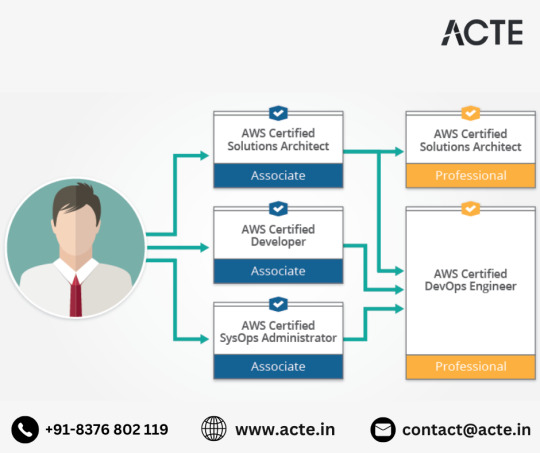
1. Architecting Excellence: Steering Digital Transformations AWS certification catapults you into roles where you architect and implement cutting-edge solutions. As a linchpin in digital transformations, you play a pivotal role in creating scalable, secure, and cost-effective solutions aligned with organizational objectives.
2. Cloud Architect Mastery: Orchestrating Comprehensive Cloud Strategies The journey doesn't stop at Solution Architect; it seamlessly transitions into broader Cloud Architect roles. Here, you orchestrate end-to-end cloud strategies, ensuring optimal performance, security, and efficiency in cloud-based environments.
3. Enterprise Architect Pinnacle: Shaping Holistic IT Strategies With AWS certification, the pathway extends to Enterprise Architect roles. This involves shaping the overarching IT strategy, aligning technology solutions with business goals, and ensuring seamless integration across the enterprise.
4. Cloud Consulting Expertise: Guiding Clients on Cloud Journey Organizations seek AWS-certified Solution Architects for Cloud Consultant positions, where you provide guidance on cloud strategies, migration plans, and optimize AWS infrastructure for enhanced performance.
5. Technical Leadership Zenith: Guiding Development Initiatives Expertise gained through AWS certification positions you favorably for technical leadership roles. Leading teams, guiding development projects, and offering strategic input on technology initiatives become part of your purview.
6. DevOps Alchemy: Bridging Development and Operations The fusion of AWS expertise and Solution Architect skills opens doors to DevOps Engineer opportunities. Your grasp of cloud infrastructure proves invaluable in optimizing continuous integration and deployment pipelines.
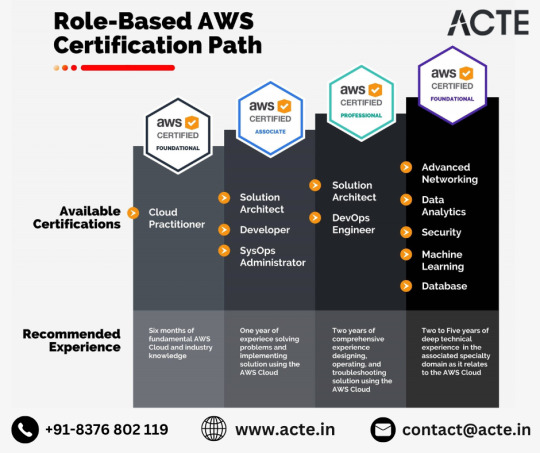
7. Pre-Sales Artistry: Crafting Compelling Solutions Leverage AWS certification in Pre-Sales Solutions Architect positions. Engaging with clients during the pre-sales phase, you become instrumental in understanding their needs and crafting compelling solutions.
8. Specialized Architectural Prowess: Exploring Niche Opportunities As technology evolves, specialized Solution Architect roles emerge. Depending on your interests and the evolving AWS service landscape, opportunities in areas like AI/ML architecture, IoT solutions, or serverless architectures beckon.
9. Entrepreneurial Odyssey: Beyond Conventional Paths Armed with AWS certification, entrepreneurial pursuits become viable. Whether offering specialized AWS services or launching a tech startup, the certification serves as a foundation for innovative endeavors.
10. Lifelong Learning Odyssey: Staying Ahead in the Dynamic AWS Realm The AWS ecosystem is dynamic, with constant updates and new services. Your certification journey becomes a springboard for continuous learning and professional development, ensuring you remain at the forefront of cloud technology.
In conclusion, AWS certification for Solution Architects is not just a validation; it's a compass guiding you through a rich tapestry of career possibilities. Whether crafting digital landscapes, steering enterprises through the cloud, or exploring niche opportunities, the certification becomes a catalyst for continuous growth, learning, and innovation in the ever-evolving cloud computing domain.
2 notes
·
View notes
Text
Streamline Your Business with Expert AWS Cloud Consulting Services

Goognu offers expert AWS Cloud Consulting Services to empower businesses with seamless digital transformation. Our team of certified AWS professionals provides end-to-end support, from architecture design to migration, optimization, and security. Leverage the power of AWS to scale your business, enhance efficiency, and reduce costs. Trust Goognu for innovative solutions tailored to your unique needs. Unlock the full potential of the cloud with our reliable and comprehensive AWS Cloud Consulting Services. Transform your business today!
2 notes
·
View notes
Text
IBM Maximo AWS Deployment Strategies

The Business Value of IBM Maximo, a recent IDC report that surveyed 9 companies with an average of 8,500 employees, found that adopting IBM Maximo resulted in a business benefit of USD 14.6 million per year per organization, 43% less unplanned downtime, and USD 8.6 million in total equipment cost avoidances.
One comprehensive, cloud-based application platform for asset monitoring, management, predictive maintenance, and reliability planning is IBM Maximo Application Suite (MAS). Maximo optimizes performance, extends asset lifecycles, and reduces downtime and costs for high-value assets using AI and analytics. Hosting Maximo on a scalable infrastructure maximizes performance, hence the current tendency is to shift it to the cloud. In this trip, MAS migration and deployment on AWS Cloud are gaining popularity.
The growing demand for Maximo AWS Cloud migration
Migrating to cloud helps enterprises improve operational resilience and dependability while updating software with minimal effort and infrastructure constraints. Due to the growing demand for data-driven asset management, firms must aggregate data from diverse departments to identify trends, generate predictions, and make better asset management decisions.
Last April, IBM said Maximo 7.6 and add-on support would stop in September 2025. All Maximo EAM customers must upgrade to the latest cloud-based MAS. Maximo migration and modernization are become increasingly significant to clients.
IBM has released new containerized versions of Maximo Application Suite as a Service (MAS SaaS) on AWS Marketplace with Bring Your Own License (BYOL) to assist Maximo migration to AWS. MAS SaaS on AWS is another milestone in Maximo’s integration of Monitor, Health, and Visual Inspection into a unified suite.
What makes MAS SaaS distinct
IBM Site Reliability Engineering (SRE) specialists use best practices to continuously maintain and administer MAS SaaS, a subscription-based AWS service. This partnership gives customers an industry-leading IBM asset management system underpinned by AWS’s size, agility, and cost-efficiency.
Upgrades and migrations to MAS 8 are possible with MAS SaaS. The data update is similar to prior upgrades, but ROSA and other dependencies require architecture changes. The migration is comparable to how clients transitioned from on-premise to Maximo EAM SaaS Flex, but with MAS changes. Perpetual on-premises customers would stop paying Service & Support (S&S) and purchase a SaaS subscription, on-premises Subscription License customers would start a new subscription, and existing MAS Flex and MAS Managed Service customers would start a new subscription to migrate to MAS SaaS.
Our IBM Consulting Cloud Accelerator (ICCA) technology lets firms plan migration and upgrade strategies before investing.
Maximo migration strategy of a global energy firm
IBM worked closely with an energy company confronting the following challenges:
Infrastructure needed for latest Maximo version takes longer.
WebSphere, Maximo’s core, experienced high-availability and performance difficulties.
Lack of data fabric and integration layer hinders cross-application data interchange.
Complex setup, failures, and security with manual end-to-end deployment.
Since Maximo Application Suite 8 (MAS8) tackles industry issues like failure risk, escalating maintenance costs, sustainability, and compliance laws, the customer chose it. The client chose AWS Cloud for its deployment flexibility, scalability, high availability, and secure architecture.
Approach to solution
This is how IBM accelerated the energy company’s Maximo move to AWS:
Used Infra as a code to upgrade Maximo from 7.6.0.9 to 7.6.1.2.
IaC allowed instance spin-up for auto scaling. This automation reduces the time to spin up and execute the new environment and addresses multi-AWS availability zone deployment latency.
Used AWS DMS for data migration and schema conversion.
IaC spun the DR environment on demand to reduce database replication (DR) infrastructure and expense. DR capabilities update data in availability zone and DR area.
Achieved data exchange across applications using IBM Cloud Pak for Data and standardized integration using IBM Cloud Pak for Integration components.
Solution components
Maximum Enterprise Application Management (EAM) has a 3-tier design with these components:
HTTP/Web Tier and Application Tier using IBM WebSphere and HIS installed EC2 instance under private subnet for application security.
Database Tier uses AWS Oracle RDS with replication for DR under private subnet.
AWS best practices were used to configure VPC with public and private subnets.
Application servers and deployment manager were autoscaled by Auto Scaling Group.
Maximum web-based UI resolution for external access using AWS Route 53.
WAF was the initial line of defense against web exploits.
Integration of Terraform and CFT IaC scripts provided autoscaling architecture.
AWS Reference Architecture
Max on RedHat OpenShift Service on AWS (ROSA) helps clients
Containerized MAS 8.0 runs on RedHat OpenShift. AWS, IBM, and RedHat developed an IBM MAS on ROSA reference architecture to help customers inexperienced with production containerization. ROSA, a fully managed, turnkey application platform, supports IBM MAS configuration and offloads cluster lifecycle management to RedHat and AWS, allowing organizations to focus on application deployment and innovation. This means IBM MAS clients don’t need to develop, administer, or maintain RedHat OpenShift clusters.
Operating Model and Maximo Migration
Top 3 Maximo AWS migration accelerators
Clients can migrate to the cloud using three IBM MAS deployment methods on AWS Cloud:
ROSA-powered MAS SaaS on AWS
ROSA-powered AWS MAS
Customer-hosted ROSA
Why use customer-hosted ROSA
The customer-hosted ROSA option for hosting IBM MAS in a customer’s VPC with ROSA is powerful. ROSA is perfect for MAS deployments because it seamlessly deploys, scales, and manages containerized applications.
The benefits of this choice are enormous. Full control over the infrastructure while still subject to the organization’s monitoring, controls, and governance standards allows businesses to customize and adjust the environment to their needs. This control includes adding MAS integrations and enforcing cloud security and governance requirements. ROSA charges are combined into one AWS bill and drawn from any AWS enterprise agreement, simplifying financial management.
AWS enterprise agreements and Compute Savings Plans offer infrastructure savings for MAS implementations. Because the ROSA cluster operates under the customer’s AWS account, customers can buy upfront ROSA contracts and get a one-year or three-year ROSA service charge discount.
Why IBM for Maximo AWS migration?
Any modernization effort must include cloud migration. Cloud migration is not a one-size-fits-all method, and each organization faces unique cloud adoption difficulties.
IBM Consulting’s Application Modernization offering helps clients migrate and modernize AWS applications faster, cheaper, and more efficiently, reducing technical debt and accelerating digital initiatives while minimizing business risk and improving business agility.
IBM offers unique cloud migration services to accelerate customer application migration to AWS:
Cloud migration factory capabilities including proven frameworks and processes, automation, migrating templates, security policies, and AWS-specific migration squads speed up delivery.
IBM Garage Methodology, IBM’s cloud services delivery capabilities, ROSA, and AWS Migration tools and accelerators accelerate migration and cloud adoption.
ICCA, IBM’s proprietary framework for migration and modernization, reduces risk. ICCA for AWS Cloud automates various modernization procedures, simplifying and speeding up company agility. Before investing, businesses can plan migration and modernization strategies. Discover IBM Consulting Cloud Accelerator for AWS Cloud.
Our well-defined pattern-based migration methodology includes re-factor, re-platform, and containerization using AWS managed services and industry-leading tools to remove and optimize technical debt.
Finally, IBM offers customizable t-shirt-sized price models for small, medium, and large migration sizes, ensuring clients’ migration scope is obvious.
IBM helps clients migrate applications, like Maximo to AWS Cloud
In conclusion, clients seek IBM’s expertise to:
1.Upgrade Maximo 7.6x (expiring 2025) to MAS 8.
2.On-premise workload to AWS Cloud for elastic, scalable, and highly available infrastructure and runtime
IBM Consulting can help
AWS Premier Partner IBM Consulting accelerates hybrid cloud journeys on the AWS Cloud by leveraging business and IT transformation skills, processes, and tools from many industries. On AWS Cloud, IBM’s security, enterprise scalability, and open innovation with Red Hat OpenShift enable enterprises grow swiftly.
BM Consulting develops cloud-native apps in AWS Cloud with 21,000+ AWS-certified cloud practitioners, 17 validated SDD programs, and 16 AWS competencies. IBM Consulting is the best AWS partner due to acquisitions like Nordcloud and Taos, advancements at IBM Research, and co-development with AWS.
Read more on Govindhtech.com
2 notes
·
View notes
Text
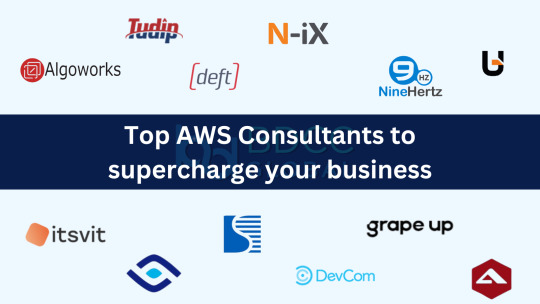
Transform your business with the expertise of top AWS consultants.
From cloud migration to cost optimization, they have the skills and knowledge to help you achieve your goals.
Let's supercharge your business with AWS!
2 notes
·
View notes
Text

Best Software Development Company | AllCode
Discover why we are recognized as the Best Software Development Company in the industry! With a proven track record of delivering innovative, scalable, and tailored software solutions, we help businesses streamline processes and achieve their goals. From web and mobile app development to enterprise-grade software, our team of experts ensures top-notch quality and timely delivery. Explore our portfolio and let us bring your vision to life with cutting-edge technology and unparalleled expertise.
0 notes
Text
Cloud migration guide: Your strategic path to AWS migration
Today’s business world is reverberating with the drumbeat of digital transformation. Organizations across industries sprint to keep pace with evolving customer demands, competition, and ever-shifting technological landscapes.
Adopting Amazon Web Services (AWS) has become a critical catalyst for success in this high-stakes race. IT infrastructure and applications in the cloud require a well-defined AWS cloud migration strategy, one that charts the path to maximizing the transformative power of this technology.
This blog serves as your compass, guiding you through the intricacies of AWS cloud migration and empowering you to start a successful course toward digital dominance.
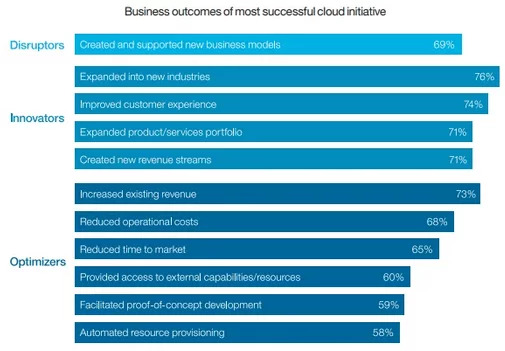
Source: IBM
Cloud migration strategies and their importance
The decision to migrate to AWS is just the first step on your digital expedition. Choosing the right path is crucial, for it affects the pace, cost, and ultimately, the success of your cloud takeover.
But why migrate at all? Why abandon the familiar confines of your on-premises castle for the uncharted territory of the cloud? Consider these treasures that beckon from the cloud:
Agility: Adapt and scale your applications quickly, just like a cloud expert avoiding digital challenges.
Scalability: If you need more servers to manage high traffic, the cloud has plenty available, just a click away.
Cost-efficiency: Ditch the expensive upkeep of on-premises infrastructure. The cloud offers a pay-as-you-go model, like renting a cloud-powered dragon instead of buying your own stable.
Innovation: Embrace the latest cloud technologies and unlock new possibilities, like using a cloud-powered telescope to scan for future business opportunities.
With these riches within reach, who wouldn’t want to join the cloud migration craze? However, navigating the landscape of the seven Rs without understanding their strengths and limitations can lead to detours and missed opportunities. In the next section, we’ll delve deeper into each R, unpacking their individual characteristics and equipping you to chart the optimal course towards your cloud kingdom.
The seven R’s of cloud migration
The seven R’s represent distinct migration strategies with varying degrees of complexity, speed, and long-term impact on your application portfolio. Let’s explore each R in detail, highlighting its purpose, suitability, and potential limitations:
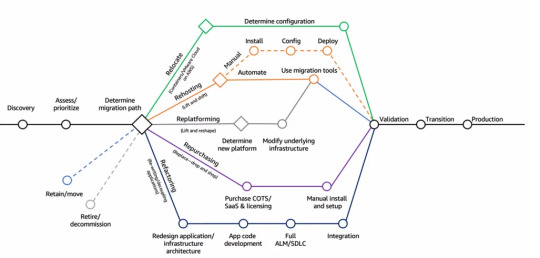
Source: AWS
1. Rehost (Lift and Shift): This rapid and cost-effective option involves directly migrating applications to the AWS cloud infrastructure without significant architectural changes. Think of it as simply relocating your servers to a cloud data center, leveraging its scalability and resilience. However, this approach may limit long-term agility and cloud-native optimization potential.
2. Relocate: If you seek specific AWS features or multi-cloud flexibility, relocating applications to a different cloud platform might be ideal. This approach requires careful planning and compatibility testing but opens doors to specialized services or cost optimization opportunities.
3. Replatform: When existing architecture impedes cloud optimization, replatforming applications allows you to fully utilize cloud-native principles. This approach involves significant reworking to unlock advanced scalability, elasticity, and resilience. However, it demands substantial resources, expertise, and planning.
4. Refactor: For applications where future-proof agility is crucial, refactoring involves building them completely from scratch, embracing serverless technologies and microservices architecture. This most comprehensive approach unlocks future potential but requires intensive resources and planning.
5. Repurchase: Instead of extensive replatforming, you can repurchase outdated applications for cost-effective cloud-native equivalents offering similar functionality. This approach streamlines maintenance, provides modern features, and leverages the inherent advantages of cloud architecture.
6. Retire: This AWS cloud migration strategy targets outdated, underutilized, or incompatible applications. Retiring these applications liberates resources and simplifies your IT infrastructure, while reducing maintenance costs and potential security vulnerabilities.
7. Retain: For stable and compliant applications, retaining them on-premises ensures operational continuity and minimizes disruption. This approach avoids unnecessary migration efforts and allows you to focus cloud resources on strategic priorities.
By understanding the strengths and limitations of each R, you can confidently choose the most appropriate migration strategy for each application in your portfolio. Remember, a hybrid approach is often optimal, tailoring specific R’s to different applications for successful cloud adoption.
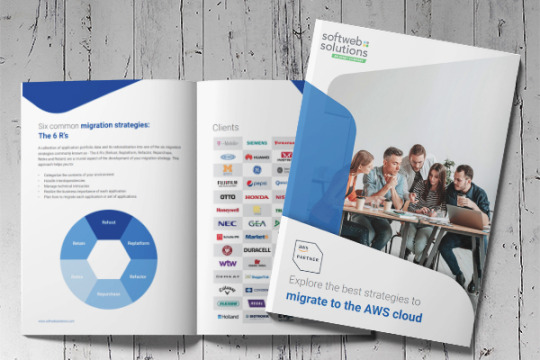
Insights
Explore the best strategies to migrate to the AWS cloud
AWS migration refers to the process of moving an organization's IT infrastructure, applications and data to the cloud-based services offered by Amazon Web Services (AWS).
Download
When to use each migration model
Migration strategy: Retire
Use Case: Outdated, underutilized, or incompatible applications
Benefits:
Simplifies infrastructure
Reduces maintenance costs
Mitigates security vulnerabilities
Implementation: Analyze workload dependencies and plan sunsetting process
Migration strategy: Retain
Use Case: Stable and compliant applications needing operational continuity
Benefits:
Minimizes disruption
Avoids unnecessary migration effort
Focuses resources on strategic priorities
Implementation: Assess compliance requirements and optimize on-premises environment
Migration strategy: Rehost (Lift & Shift)
Use Case: Rapid and cost-effective migration with minimal architectural changes
Benefits:
Leverages cloud scalability
Resilience
Reduces data center complexity
Implementation: Refine infrastructure sizing and optimize resource utilization
Migration strategy: Relocate
Use Case: Specific cloud feature requirements or multi-cloud flexibility
Benefits:
Accesses specialized services
Optimizes costs across platforms
Enhances future flexibility
Implementation: Evaluate target platform compatibility and plan data migration strategy
Migration strategy: Repurchase
Use Case: Cost-effective cloud-native alternatives for outdated applications
Benefits:
Streamlines maintenance provides modern features
Unlocks cloud-native advantages
Implementation: Identify suitable SaaS or PaaS offerings and plan application integration
Migration strategy: Replatform
Use Case: Significant performance and agility gains, but with greater reworking
Benefits:
Unlocks advanced scalability
Resilience
Future-proofs architecture
Implementation: Invest in development resources and plan application modernization roadmap
Migration strategy: Refactor
Use Case: Complete rebuild for future-proof agility and cloud-native optimization
Benefits:
Enables microservices architecture
Unlocks serverless technologies
Maximizes cloud potential
Implementation: Secure dedicated resources and prioritize development expertise
AWS migration benefits
Beyond simply transitioning your infrastructure, migrating to AWS delivers tangible benefits that empower your business to thrive in the digital landscape. These advantages stem from several key areas:
1. Unmatched agility: Adapt and respond to market shifts with lightning speed. AWS enables rapid scaling up and down of resources, effortless deployment of new applications, and real-time adjustments to meet shifting demands. This agility allows you to capitalize on fleeting opportunities and outmaneuver competitors.
2. Infinite scalability: Break free from the constraints of on-premises limitations. AWS offers boundless scalability, seamlessly accommodating spikes in activity, resource-intensive projects, and future growth. Need more servers? They’re available with a click. Require advanced analytics capabilities? Specialized services readily await. Your ambitions are no longer confined to infrastructure.
3. Optimized cost management: Ditch the burden of upfront investments and unpredictable expenses. AWS embraces a pay-as-you-go model, where you only pay for the resources you consume. This granular control enables precise cost optimization, eliminating wasted capacity and over-provisioning. Invest intelligently in cloud resources that directly drive business value.
4. Innovation as a constant: Embrace the cutting edge and propel your digital transformation. AWS constantly introduces groundbreaking services and features, opening doors to previously unimaginable possibilities. From artificial intelligence and machine learning to serverless computing and data analytics, the cloud fuels disruptive ideas and propels you ahead of the curve.
5. Global reach and resilience: Extend your digital borders and connect with customers like never before. AWS boasts a global network of data centers, ensuring exceptional performance and unparalleled redundancy regardless of your users’ location. This global reach strengthens your brand, unlocks new markets, and bolsters your disaster recovery capabilities.
6. Unwavering security and compliance: Prioritize data security and safeguard your reputation. AWS prioritizes multi-layered security controls and adheres to the highest compliance standards. Sensitive data is protected with rigorous measures, building trust with customers and minimizing risk.
Conquering cloud migration challenges
With the seven Rs as your compass, it’s time to chart your course through the inevitable challenges that arise on any AWS migration journey. By anticipating these roadblocks and proactively addressing them, you can ensure a smoother and more successful transition to the cloud. Here are some key obstacles to keep in mind:
1. Complexity and skill gap: Navigating the vast and ever-evolving AWS ecosystem can be daunting, especially for organizations with limited cloud experience. This complexity, coupled with a potential skill gap in your team, can lead to inefficient resource utilization, suboptimal architecture choices, and delayed timelines.
Strategize: Address this challenge by investing in training and certifications for your IT staff, partnering with experienced AWS consultants, and leveraging readily available online resources and documentation. Prioritize understanding core AWS services and best practices to make informed decisions throughout your migration.
2. Security considerations: Migrating sensitive data and applications to the cloud requires meticulous attention to security protocols and compliance regulations. Failure to secure your assets can lead to data breaches, reputational damage, and hefty fines.
Fortify: Implement robust access controls, data encryption, and threat detection mechanisms. Choose security-focused AWS services and adhere to industry best practices. Partnering with AWS security experts can significantly mitigate risks and ensure compliance.
3. Vendor lock-in: While leveraging the full range of AWS services can offer significant benefits, over-reliance on proprietary solutions can create an unhealthy dependence on a single vendor. This can limit your future flexibility and potentially increase costs.
Diversify: Maintain a balance between utilizing valuable AWS services and keeping some workloads on-premises or considering multi-cloud strategies. This approach enhances flexibility and bargaining power in the long run.
4. Cost management: While AWS offers flexible pricing models and optimization tools, managing cloud costs effectively requires ongoing monitoring and proactive adjustments. Uncontrolled spending can quickly eat into your budget and undermine the cost-effectiveness of your migration.
Optimize: Implement strategies like reserved instances, cost tagging, and resource auto-scaling to control expenses. Regularly review your cloud bills and identify areas for optimization. Remember, continuous cost management is the key to maximizing the financial benefits of the cloud.
Beyond migration: Embracing the digital horizon with Softweb Solutions
By embracing this roadmap, you’ll propel your business forward with agility, efficiency, and innovation. The cloud isn’t just a destination; it’s a powerful platform for growth and transformation. Don’t let questions cloud your judgment. Let Softweb Solutions be your guide to sail you through.
Originally published at https://www.softwebsolutions.com on February 14, 2024.
#AWS migration#AWS cloud migration#Cloud migration guide#AWS cloud#AWS migration benefits#AWS consultants#7 Rs Strategy
0 notes
Text
Powering Progress – Why an IT Solutions Company India Should Be Your Technology Partner
In today’s hyper‑connected world, agile technology is the backbone of every successful enterprise. From cloud migrations to cybersecurity fortresses, an IT Solutions Company India has become the go‑to partner for businesses of every size. India’s IT sector, now worth over USD 250 billion, delivers world‑class solutions at unmatched value, helping startups and Fortune 500 firms alike turn bold ideas into reality.
1 | A Legacy of Tech Excellence
The meteoric growth of the Indian IT industry traces back to the early 1990s when reform policies sparked global outsourcing. Three decades later, an IT Solutions Company India is no longer a mere offshore vendor but a full‑stack innovation hub. Indian engineers lead global code commits on GitHub, contribute to Kubernetes and TensorFlow, and spearhead R&D in AI, blockchain, and IoT.
2 | Comprehensive Service Portfolio
Your business can tap into an integrated bouquet of services without juggling multiple vendors:
Custom Software Development – Agile sprints, DevOps pipelines, and rigorous QA cycles ensure robust, scalable products.
Cloud & DevOps – Migrate legacy workloads to AWS, Azure, or GCP and automate deployments with Jenkins, Docker, and Kubernetes.
Cybersecurity & Compliance – SOC 2, ISO 27001, GDPR: an IT Solutions Company India hardens your defenses and meets global regulations.
Data Analytics & AI – Transform raw data into actionable insights using ML algorithms, predictive analytics, and BI dashboards.
Managed IT Services – 24×7 monitoring, incident response, and helpdesk support slash downtime and boost productivity.
3 | Why India Wins on the Global Stage
Talent Pool – Over four million skilled technologists graduate each year.
Cost Efficiency – Competitive rates without compromising quality.
Time‑Zone Advantage – Overlapping work windows enable real‑time collaboration with APAC, EMEA, and the Americas.
Innovation Culture – Government initiatives like “Digital India” and “Startup India” fuel continuous R&D.
Proven Track Record – Case studies show a 40‑60 % reduction in TCO after partnering with an IT Solutions Company India.
4 | Success Story Snapshot
A U.S. healthcare startup needed HIPAA‑compliant telemedicine software within six months. Partnering with an IT Solutions Company India, they:
Deployed a microservices architecture on AWS using Terraform
Integrated real‑time video via WebRTC with 99.9 % uptime
Achieved HIPAA compliance in the first audit cycle The result? A 3× increase in user adoption and Series B funding secured in record time.
5 | Engagement Models to Fit Every Need
Dedicated Development Team – Ideal for long‑term projects needing continuous innovation.
Fixed‑Scope, Fixed‑Price – Best for clearly defined deliverables and budgets.
Time & Material – Flexibility for evolving requirements and rapid pivots.
6 | Future‑Proofing Your Business
Technologies like edge AI, quantum computing, and 6G will reshape industries. By aligning with an IT Solutions Company India, you gain a strategic partner who anticipates disruptions and prototypes tomorrow’s solutions today.
7 | Call to Action
Ready to accelerate digital transformation? Choose an IT Solutions Company India that speaks the language of innovation, agility, and ROI. Schedule a free consultation and turn your tech vision into a competitive edge.
Plot No 9, Sarwauttam Complex, Manwakheda Road,Anand Vihar, Behind Vaishali Apartment, Sector 4, Hiran Magri, Udaipur, Udaipur, Rajasthan 313002
1 note
·
View note
Text
Your Trusted Partner for AWS Cloud Consulting Services
we understand that every organization has unique requirements and goals. That's why our AWS Cloud consulting services are tailored to meet your specific needs. Whether you're looking to migrate your infrastructure to AWS, optimize your existing cloud environment, or implement advanced cloud solutions, our certified AWS architects and consultants are here to guide you every step of the way.
#AWS Cloud Consulting#Cloud Strategy#Cloud Migration#AWS Certified Consultants#Cloud Solutions#AWS Managed Services
1 note
·
View note
Text
Java Consulting Company
Looking for a reliable Java consulting company? Associative in Pune, India, offers expert Java development, Spring Boot solutions, and enterprise-grade consulting services tailored to your business needs.
Expert Java Consulting Company in Pune – Powering Scalable Software Solutions
In the dynamic world of enterprise technology, finding a reliable Java consulting company that delivers scalable, secure, and high-performing solutions is essential. Associative, a leading software company based in Pune, India, is your trusted partner in unlocking the full potential of Java for business transformation.

Why Choose Associative for Java Consulting?
At Associative, we combine deep technical knowledge with strategic business insights to provide end-to-end Java consulting services. Whether you're building enterprise-grade software, optimizing legacy systems, or integrating Java with modern tech stacks, our team ensures future-ready solutions.
Our Java Consulting Services Include:
Custom Java Application Development: Tailored solutions built on robust Java frameworks like Spring Boot, Hibernate, and Struts.
Enterprise Java Architecture Consulting: Design scalable and modular architectures for enterprise-grade systems.
Java Performance Tuning & Optimization: Improve the speed and efficiency of your existing Java applications.
Java Migration & Modernization: Seamless migration from legacy systems to modern Java platforms.
Cloud Integration with Java: Deploy Java applications on AWS, GCP, or hybrid cloud environments.
Java API Development & Integration: Create secure, high-performance RESTful APIs for modern software ecosystems.
Industries We Serve
As a seasoned Java consulting company, Associative supports startups, SMBs, and large enterprises across various domains including:
E-commerce and Retail
Banking and Finance
Education and E-learning
Healthcare and Wellness
Gaming and Entertainment
Blockchain and Web3
End-to-End Expertise in Java & Beyond
Our capabilities don’t stop at Java. Associative’s diverse technology stack includes:
Mobile App Development for Android & iOS
Web & E-commerce Development on platforms like Magento, Shopify, and WordPress
Frontend & Backend Development using Node.js, React.js, Express.js
Full-stack Java Development with Spring Boot and Oracle DB
Cloud & DevOps with AWS and GCP
Web3 and Blockchain Integration
Game Development & Software Solutions
Digital Marketing & SEO Services
Partner with Associative – Your Trusted Java Consulting Company
With years of hands-on experience and a strong focus on client satisfaction, Associative stands out as a dependable Java consulting company in India. We ensure transparent communication, agile development processes, and 24/7 technical support to keep your projects running smoothly.
youtube
0 notes
Text
Cloud Networking Market Innovation Surges as Businesses Prioritize Scalable Secure Cloud Network Solutions
The cloud networking market is undergoing a significant transformation, driven by the increasing demand for scalable, agile, and cost-efficient networking solutions. Cloud networking refers to the use of cloud-based services and infrastructure to manage and deliver network functions such as connectivity, security, and performance management. As enterprises continue to embrace digital transformation, cloud networking has become a foundational component in achieving operational efficiency, innovation, and competitiveness.

Market Overview
The global cloud networking market has seen rapid growth in recent years. This expansion is primarily fueled by the proliferation of cloud-based applications, the shift towards hybrid and multi-cloud environments, and the rising need for improved network agility and automation. Organizations are moving away from traditional on-premises networking models and investing in cloud-native networking solutions that offer on-demand scalability and centralized control.
Key industry players such as Cisco, Amazon Web Services (AWS), Microsoft Azure, Google Cloud, and IBM are continuously innovating and expanding their cloud networking portfolios. These companies are integrating artificial intelligence (AI), machine learning (ML), and automation capabilities into their networking services, which has enhanced network visibility, threat detection, and overall performance.
Market Drivers
Several critical factors are propelling the growth of the cloud networking market:
Increased Adoption of Cloud Services: As more businesses migrate their workloads to the cloud, the demand for secure and reliable cloud networking infrastructure continues to rise.
Remote Work and BYOD Trends: The global shift to remote and hybrid work environments has underscored the need for scalable cloud networking that supports seamless access to resources from any location or device.
Edge Computing and IoT Integration: The rise of edge computing and Internet of Things (IoT) devices has led to the need for decentralized networking models, further increasing the demand for cloud-based network management tools.
Security and Compliance Requirements: Modern cloud networking solutions offer enhanced security features, including network segmentation, zero-trust models, and compliance monitoring, making them ideal for organizations in regulated industries.
AI and Automation Integration: The integration of AI and automation into cloud networking platforms is enabling predictive analytics, self-healing networks, and automated troubleshooting, which reduce operational costs and enhance user experiences.
Market Segmentation
The cloud networking market can be segmented based on:
Deployment Type: Public cloud, private cloud, and hybrid cloud.
Component: Solutions (e.g., SD-WAN, cloud routers, cloud firewalls) and services (e.g., consulting, integration).
Organization Size: Small and Medium Enterprises (SMEs) and large enterprises.
End-User Industry: IT & telecom, BFSI, healthcare, retail, manufacturing, and government.
Among these, the hybrid cloud deployment model is gaining significant traction due to its flexibility, scalability, and cost-efficiency. Additionally, the IT and telecom sector remains the largest consumer of cloud networking technologies, followed closely by the BFSI and healthcare sectors.
Regional Insights
North America currently dominates the cloud networking market, owing to the presence of leading technology providers and high adoption of cloud computing in the region. However, the Asia-Pacific (APAC) region is expected to witness the fastest growth during the forecast period, driven by rapid digitalization in countries like China, India, and Japan. Governments in these regions are also heavily investing in cloud infrastructure and smart city projects, further boosting market potential.
Challenges and Opportunities
Despite the numerous benefits, the cloud networking market faces several challenges. Data privacy concerns, legacy system integration, and complex compliance requirements continue to hinder seamless cloud network adoption. Additionally, ensuring consistent network performance across geographically distributed environments remains a critical issue.
However, these challenges also open up new opportunities. There is a growing market for cloud-native security tools, network analytics platforms, and interoperability solutions that address these pain points. Startups and niche players focusing on AI-driven cloud networking innovations are also expected to play a pivotal role in shaping the market's future.
Future Outlook
The future of the cloud networking market looks promising. As technologies like 5G, AI, and blockchain continue to evolve, they will reshape the way cloud networks are designed and managed. Enterprises will increasingly adopt software-defined networking (SDN) and network function virtualization (NFV) to improve network flexibility and reduce infrastructure costs.
By 2030, the cloud networking market is expected to become a central enabler of enterprise digital ecosystems, supporting innovations in everything from autonomous systems to immersive virtual environments. Organizations that invest in robust, secure, and intelligent cloud networking infrastructure today will be better positioned to thrive in the digital economy of tomorrow.
0 notes